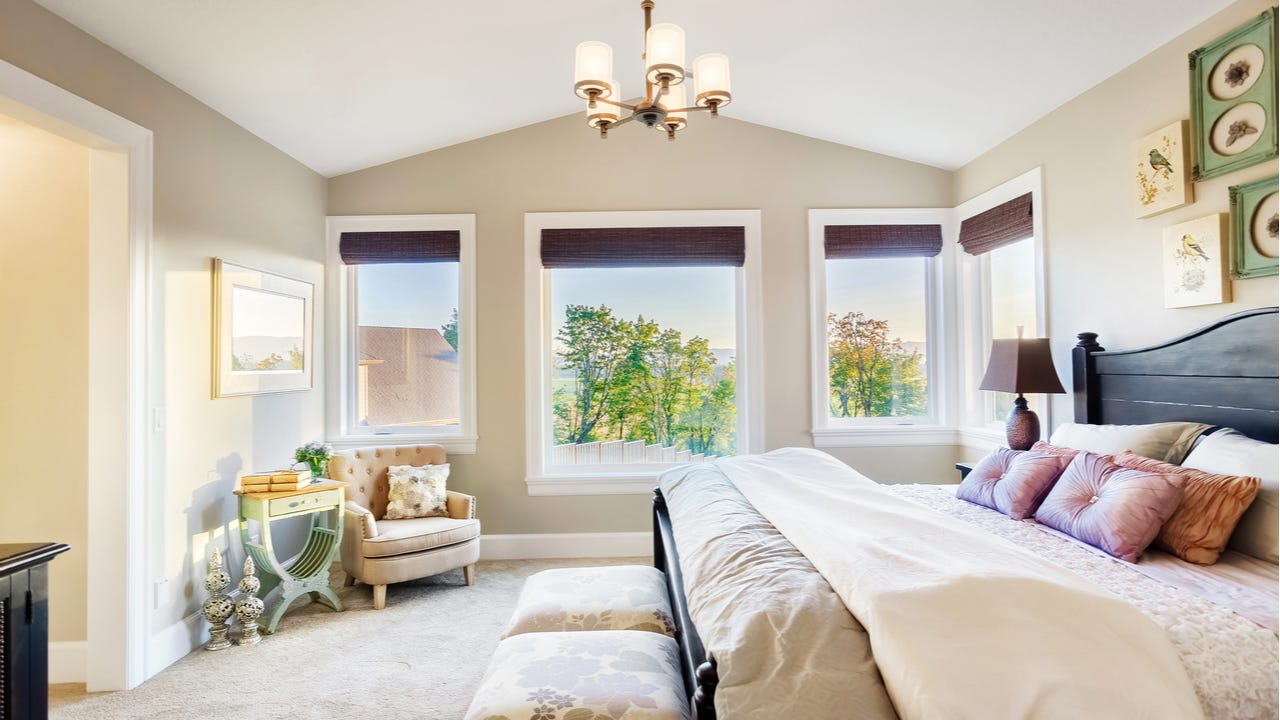How much does it cost to furnish a house?

The Bankrate promise
At Bankrate we strive to help you make smarter financial decisions. While we adhere to strict , this post may contain references to products from our partners. Here's an explanation for .
Buying a house is an exciting — and expensive — thing to do. Between making a down payment, looking at different homes and waiting out the inspection, by the time you sit down to sign the paperwork and get the keys, you might feel like the costly part of the process is over.
However, a house isn’t very useful if all you can do is sit on the floor. You need furniture to make it into a comfortable home. Here’s how you can gauge the cost of furnishing your new place.
How much does it cost to furnish a house?
There isn’t a single answer to how much it costs to furnish a house, because it varies with a number of factors. These include the size of the home, the type of furniture you buy and how much you bring with you from your previous home.
Higher-quality materials are more expensive, for example. Furnishings made of MDF or plywood are much cheaper than solid-wood pieces, and a leather couch typically costs more than the same one in fabric.
Similarly, a two-bedroom house is less expensive to furnish than a six-bedroom one, simply because you need less.
Then there’s custom pieces. These can run you anywhere from around $2,500 to $50,000 or more, depending on the craftsmanship and other factors, according to HomeAdvisor.
Whether you enlist a decorator or do it yourself also impacts your all-in cost. HomeAdvisor reports the average cost of hiring an interior designer is roughly $6,500, or $50 to $200 an hour.
One way to determine your cost is to consider what you spent to furnish your last home and account for the size difference if you’re moving into a bigger one. If you spent $3,000, for instance, furnishing two bedrooms, and your new home has an additional bedroom, you might want to earmark $1,500 for that extra space.
Checklist for furnishing your home
Until you’re in your new home, it can be hard to visualize what furniture you’ll actually need. Here’s a checklist of essentials you can use to get started:
Living room
- Sofa and/or loveseat
- Coffee table or ottoman
- End tables
- Media cabinet or TV stand
- Bookcase and other storage
- Accessories (e.g., artwork, curtains, lighting, pillows and other decor)
Bedrooms
- Bed frame and mattress
- Dressers
- Nightstands
- Bedroom bench or chair
- Accessories (e.g., blankets, lighting, mirror, pillows, sheets)
Kitchen and dining room
- Kitchen or dining table and chairs
- Counter stools
- Hutch or sideboard and other storage
- Lamps
- Accessories (e.g., lighting, rug, tableware)
Home office
- Desk and chair
- Filing cabinet
- Printer stand
- Bookcase or other storage
- Accessories (e.g., artwork, lighting)
How to pay for furniture
Paying for furniture, especially right after purchasing a house, can be challenging. If you have enough cash left over to pay for furniture and still have an emergency cushion, it might make more sense to use those savings. If that’s not an option, however, there are many other ways you can pay for furniture, such as:
- In-store financing – Many furniture stores have their own financing you can use to purchase furniture and pay it off over time. Depending on the offer, though, you could either get a great deal or wind up paying huge amounts of interest and fees. Be sure you understand all of the fees and interest before committing to a plan.
- Layaway – Some stores have layaway plans where you place a deposit for an item and make regular payments towards it. Then, once you’ve paid the full price, you can take the item home. Layaway might be preferable to financing through the store, since there is typically no interest, but the downside is you won’t get to take your furniture home right away.
- Credit cards – Depending on your credit limit, a credit card can make it easy to buy furniture now and pay for it later. It’s best if you’re able to pay your balance in full each month, though. Credit cards are generally not a good idea for long-term financing of expensive items since interest rates are higher. If you’re not careful, you could end up paying much more than the sticker price.
- Personal loan – Personal loans are highly flexible loans that you can use for almost any purpose, including buying furniture. They’re available from many banks and lenders. The interest rates on personal loans vary widely, and can be high, so make sure to compare the overall cost of taking out a loan to other payment options.
- Rent-to-own – Rent-to-own plans allow you to rent furniture and other items. If you rent the item for long enough, you can purchase it and keep it permanently. In most cases, rent-to-own isn’t the best strategy, because you’ll end up paying many times over the price for an item. While the low weekly cost can be tempting, always look at the final amount you’ll pay to actually own the item.
Tips to save money on furniture
1. Buy secondhand
Buying secondhand furniture from thrift shops or online marketplaces can be a great way to get cheap furniture that’s still in fine condition.
Ruby Escalona, blogger for financial independence and lifestyle website A Journey We Love, furnished her and her spouse’s new home on a $500 budget.
“We used a variety of sources to make the costs low, including Craigslist/Facebook Marketplace, hand-me-downs, consignment and thrift stores and adding furniture items to our wedding registry,” says Escalona. “The only items we paid for full price were appliances, and it was only when one refrigerator broke.”
2. Try to DIY
While some pieces of furniture might be too complex to make — and few people could build a TV from scratch — there are lots of things that the average person could put together.
For example, you could build a very simple bookcase with a few planks of wood and some varnish, or save on smaller-ticket items, like napkins, by repurposing old clothes and doing some sewing.
DIY furniture can also be a great way to make your house feel like home because it gives you an opportunity to leave your mark.
3. Ask about deals
When you go to a furniture store, you usually only see a small fraction of the furniture the company has in its inventory. If you ask, you might be able to snag a deal on last season’s furniture, or pieces that have very small cosmetic damage.
4. Use discounted gift cards
There are many online marketplaces that sell unwanted gift cards below face value. You might be able to buy a $100 gift card for $80, for instance. If you can find discount gift cards for a furniture store you like, this could easily save you 10 percent or more on your purchase.
Learn more:
Related Articles



